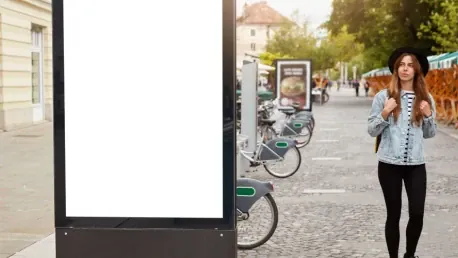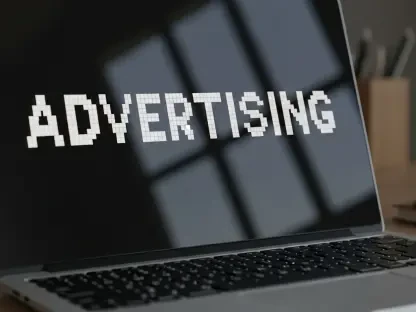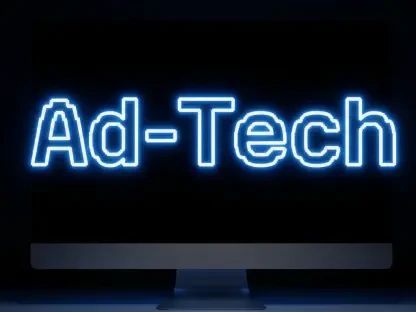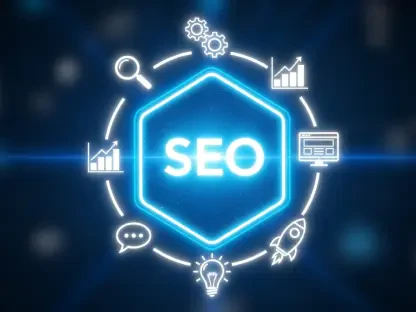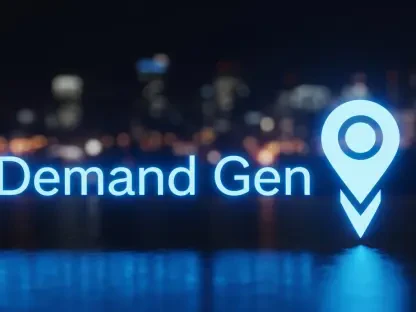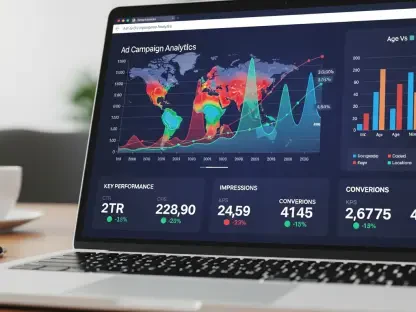As the advertising landscape continues to evolve at a breakneck pace, the out-of-home (OOH) sector is undergoing a significant transformation led by technological advancements, enhanced data analytics, and innovative creative strategies. Looking ahead to 2025, digital out-of-home (DOOH) and programmatic digital out-of-home (PDOOH) advertising are poised to captivate and engage audiences in more dynamic and personalized ways than ever before. These advancements not only promise to enhance the effectiveness of campaigns but also align with an increasing consumer demand for sustainability and ethical advertising practices.
Integration of Cutting-Edge Technology
The integration of cutting-edge technology is fundamentally reshaping how advertisers plan and execute their campaigns. Real-time data, artificial intelligence (AI), and programmatic buying systems are at the forefront of this revolution. By harnessing AI-driven personalization, advertisers can now create highly targeted and contextually relevant content that specifically appeals to a mobile audience. This capability, combined with programmatic buying, significantly simplifies ad purchasing processes, making campaigns more efficient and impactful across multiple digital screens. The implications are profound, suggesting a future where advertising is not just seen but felt, resonating deeply with individual viewers.
Incorporating real-time data sources into DOOH campaigns has added an exciting new dimension to advertising. Weather conditions, local traffic patterns, and even current events can now be used to enhance the dynamic nature of advertisements, fostering immersive and memorable viewer experiences. The application of augmented reality (AR) and interactive displays further bridges the gap between physical and digital advertising, engaging consumers on deeper levels and driving richer interactions with displayed content. This confluence of technology not only enriches the viewer’s experience but also provides brands with innovative ways to connect with their audiences.
Sustainability and Ethical Advertising Practices
Sustainability and ethical advertising practices are becoming increasingly integral to the industry. As consumers grow more environmentally conscious, the pressure on brands to demonstrate their commitment to sustainability has never been greater. Green technologies, such as solar-powered billboards and energy-efficient displays, are gaining traction and becoming standard practices within the industry. This approach ensures that the medium’s growth aligns with both social and environmental responsibilities, reflecting an awareness of consumer preference for environmentally responsible brands.
Despite DOOH’s potential, there remains a considerable gap between consumer preference for eco-friendly brands and marketer prioritization of sustainability. This gap highlights a substantial opportunity for brands that can effectively harness and advertise through DOOH while maintaining a steadfast commitment to sustainability. Addressing this disparity not only provides a competitive edge but also resonates with increasingly eco-conscious consumers, potentially driving greater brand loyalty and engagement.
DOOH as a Replacement for Traditional Broadcast Media
In a world where the influence of conventional TV is steadily declining and streaming platforms struggle to replicate TV’s widespread reach, DOOH is emerging as a viable alternative. By combining the broad visibility akin to traditional broadcasting with advanced targeting capabilities, DOOH can achieve mass reach with precise accuracy. This blend of reach and targeting makes DOOH an attractive option for advertisers looking to engage a wide audience while maintaining highly targeted messaging. It heralds a new era of advertising where campaigns are not just broadcasted but also personalized, maximizing impact and engagement.
The Interactive Advertising Bureau (IAB) has forecasted that programmatic DOOH will dominate the UK market, potentially accounting for 75% of the total OOH ad spend by 2027. This shift allows brands to craft more targeted, interactive, and integrated advertisements, enhancing the visibility of brands and deepening real-time engagement with audiences. By leveraging the capabilities of programmatic buying, advertisers can ensure their messages resonate with the right audiences at the right times, thereby enhancing the overall effectiveness of their campaigns.
Growth of Programmatic DOOH
The adoption of programmatic DOOH continues to grow both in the UK and globally, driven by several catalysts that show no signs of slowing down. Increased access to addressable data segments from both existing and new data providers, enhanced measurement tools to better quantify campaign success, and greater understanding and recognition of PDOOH’s benefits among clients and agencies are some of the driving forces behind this growth. As more advertisers realize the potential of PDOOH, it is expected to become a cornerstone of modern advertising strategies, offering unmatched precision and flexibility.
The sector anticipates a proliferation of programmatically capable screens and formats, some of which may blur the lines between traditional OOH and digital channels. This evolution in technology challenges existing norms in ad planning and buying strategies, demanding a more integrated and flexible approach. Creative advancements, particularly through AI-generated content and dynamic creative options, will also play a crucial role in this evolution. By seamlessly integrating across various channels, these innovations promise to enhance the overall impact of advertising campaigns, making them more relevant and engaging.
DOOH’s Promising Trajectory in Europe
DOOH’s trajectory in Europe is notably promising, with projections indicating it will grow to €3.93 billion (approximately £3.3 billion) by 2025, boasting an annual growth rate of 8.52%. Brands are increasingly leveraging DOOH to merge online and in-store experiences through data-driven campaigns, using tools like footfall tracking and real-time ad customization to deliver highly localized, relevant messages to consumers. This shift towards a data-centric model allows for optimized media buys, accurate tracking of results, and enhanced targeting, transforming DOOH into a richly contextual advertising channel that deeply resonates with local audiences.
Moreover, DOOH complements cross-channel marketing efforts by synchronizing messages across various digital platforms such as mobile apps, websites, and social media, supported by AI and machine learning. These advanced capabilities enable the creation of personalized consumer journeys, fostering stronger engagements and improving conversion rates. As brands continue to explore these possibilities, DOOH is set to become a critical component of comprehensive marketing strategies, driving consumer engagement and brand loyalty through highly personalized and relevant advertising experiences.
Enhanced Personalization and Targeting
As the advertising landscape rapidly evolves, the out-of-home (OOH) sector is undergoing a major transformation propelled by technological innovations, advanced data analytics, and creative strategies. By 2025, digital out-of-home (DOOH) and programmatic digital out-of-home (PDOOH) advertising are set to captivate and engage audiences more dynamically and personally than ever before. These technological advancements not only promise to boost the effectiveness of advertising campaigns but also reflect the growing consumer demand for sustainability and ethical advertising practices. Additionally, advertisers are finding new ways to make their messages more relevant and timely by leveraging real-time data and sophisticated algorithms. This includes tailoring advertisements based on location, time of day, and even weather conditions to better resonate with target audiences. As a result, OOH advertising is becoming more interactive and immersive, enhancing the user experience. In summary, the future of OOH advertising looks promising, with technology playing a crucial role in transforming how brands connect with consumers.
